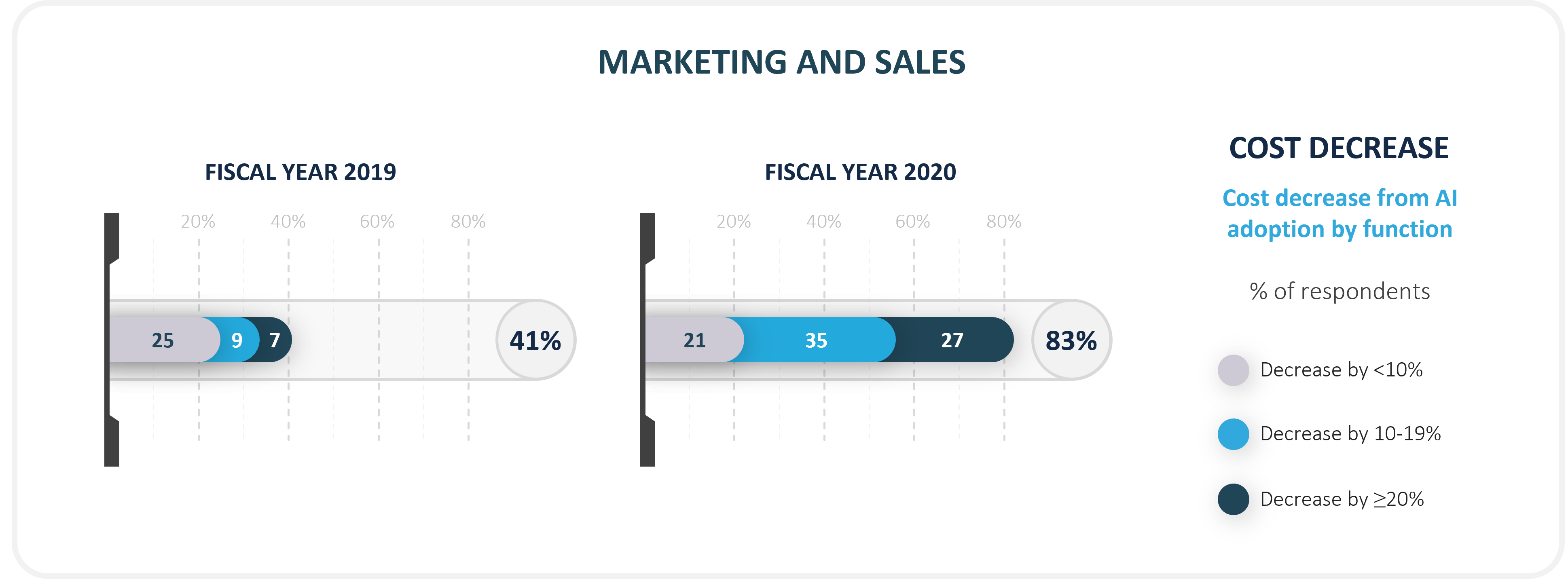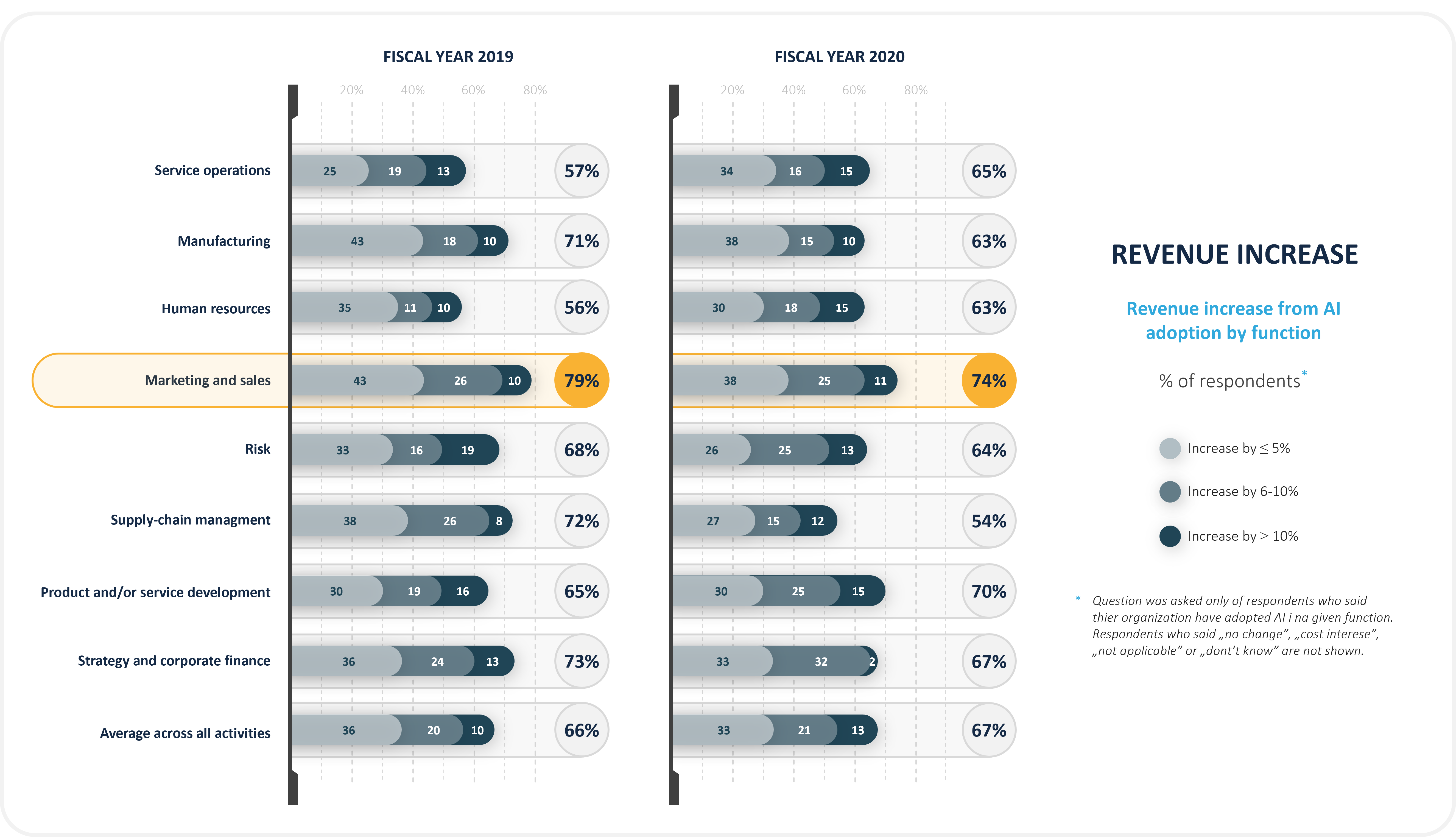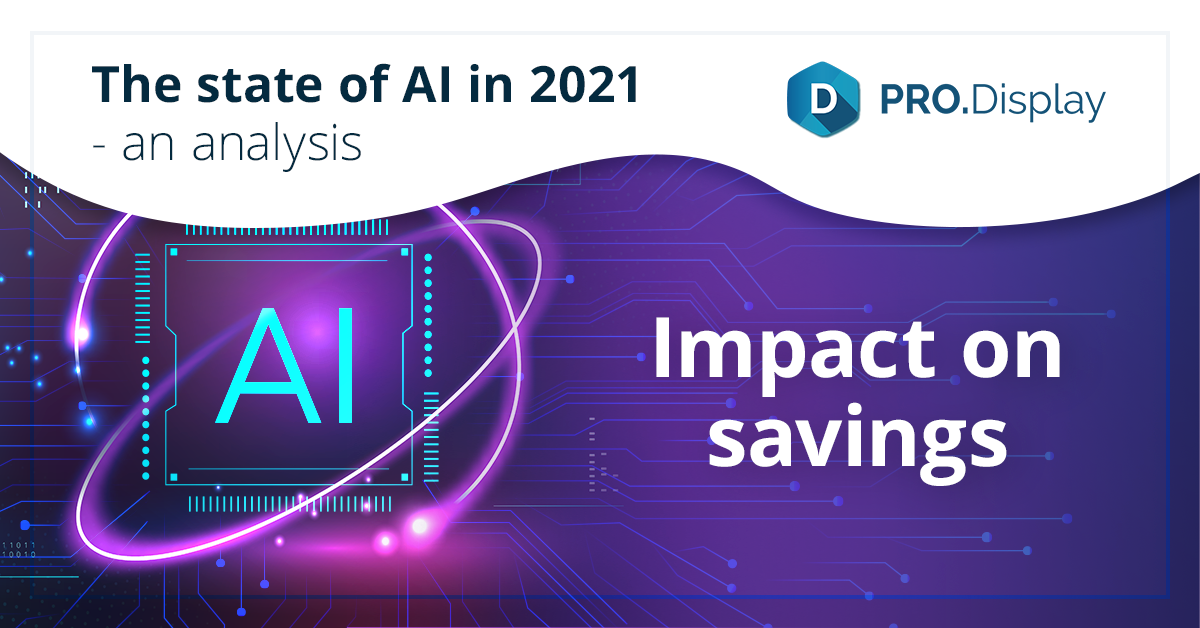In December 2021 McKinsey published a report entitled “The State of AI in 2021”. This article is part of my subjective analysis of this publication. You can find the key conclusions at this link - I will also provide links to other parts of the analysis.
From the sales department or marketing perspective, the phenomenon described below has greatly surprised me.
It proves how strongly the global situation affects a manager’s functioning or perception in these departments. Usually, these are the departments that are focused on revenue growth. Meanwhile, when analyzing the McKinsey report, from the sales and marketing perspective, I would see many more benefits of the use of AI in terms of optimizing the efficiency of their budgets, which in turn reduces the costs of their functioning. This means that marketing departments, which were previously focused mostly on income, have started taking costs much more seriously. In 2019, “only” 41% of the respondents claimed that cost reduction is a direct benefit of using AI, while a year later, as many as 83% agreed with that statement. Furthermore, the number of respondents that observed a 20% decrease in costs when utilizing AI increased fourfold.

Based on McKinsey report "The state of AI in 2021".
Our own experience from numerous projects over 6 years has confirmed that the use of AI supporting the Image Recognition system also significantly affects our clients’ cost reduction. For instance, just after introducing AI in the first projects, our clients recorded time-savings of about 20–30% during in-store visits. Last year, we measured that reporting KPIs regarding quality has accelerated sevenfold.
Another benefit worth mentioning is the quality of data when entered automatically with the use of AI as opposed to manually. Together with our clients, we have learned more than once that data which comes from AI is much more credible. There have been cases in which the real figures obtained through the use of AI differed by up to 54% from the one provided by the staff in their manual research. It means that business decisions based on the results of studies supported by AI are much more accurate.
 Based on McKinsey report "The state of AI in 2021".
Based on McKinsey report "The state of AI in 2021".
On the other hand, in 2019, 79% of respondents indicated benefits from using AI in terms of increased income, while in 2020 this figure decreased by 5 percentage points to 74%. Considering that answers such as: “the same”, “no effect” or “I don’t know” were not included, we can say that the perception of increased income as a benefit of using AI remained nearly unchanged in 2020 when compared to 2019.
So what is so interesting about it, if the perception of the possibilities of generating additional income based on the use of AI remains unchanged? I think it is worth mentioning that this particular aspect was constantly being pointed out by many of the respondents throughout those 2 years - around 75% of them confirmed that AI helps them to achieve higher income.
Additionally, let’s compare this element of the McKinsey study with a Capgemini study from 2019. Of course, it is quite difficult to directly compare the outcome from both sources and assume that the results will not change in the following years. The studies were prepared using different methodologies, samples of respondents, question formats, etc.
When we take into account the fact that the Capgemini study was based on the answers of retail chain associates (top 250 globally) and in this article we are focusing on the part of the McKinsey report that deals with sales and marketing, it seems entirely justified to draw conclusions from those 2 studies. Keep in mind of course that they are only valid to a certain general degree, due to the above mentioned differences in methodology.
 Based on McKinsey report "The state of AI in 2021".
Based on McKinsey report "The state of AI in 2021".
A particularly interesting finding in the Capgemini report was the fact that the noticeability of the benefits in the form of increased revenues rose from 2017 to 2018. While in 2017 94% of the respondents had perceived the possibility of increasing sales through using AI, in 2018 up to 99% noticed this benefit. If we add to that what we know from the McKinsey report - that the respondents from that last organization maintained their trust in increased income throughout 2019 and 2020 on a similar level - the conclusion may be drawn that most organizations which are beginning to understand AI expect an increase in income after its application. It seems that the times when large organizations had doubts about the positive impact of using AI to increase income are well and truly behind us.
If we add to that the awareness of potential savings (or the possibility of reallocating budget items which have been freed up) that AI generates, it paints a picture of AI not only helping to reduce costs but also to increase income at the same time.
This begs the question: what are companies that have not yet started the AI implementation process still waiting for? The answer to that question could not be encapsulated in a single sentence. It is a topic for a whole new article, or perhaps even a series of them.
👉 Follow us on social media to stay up to date:



